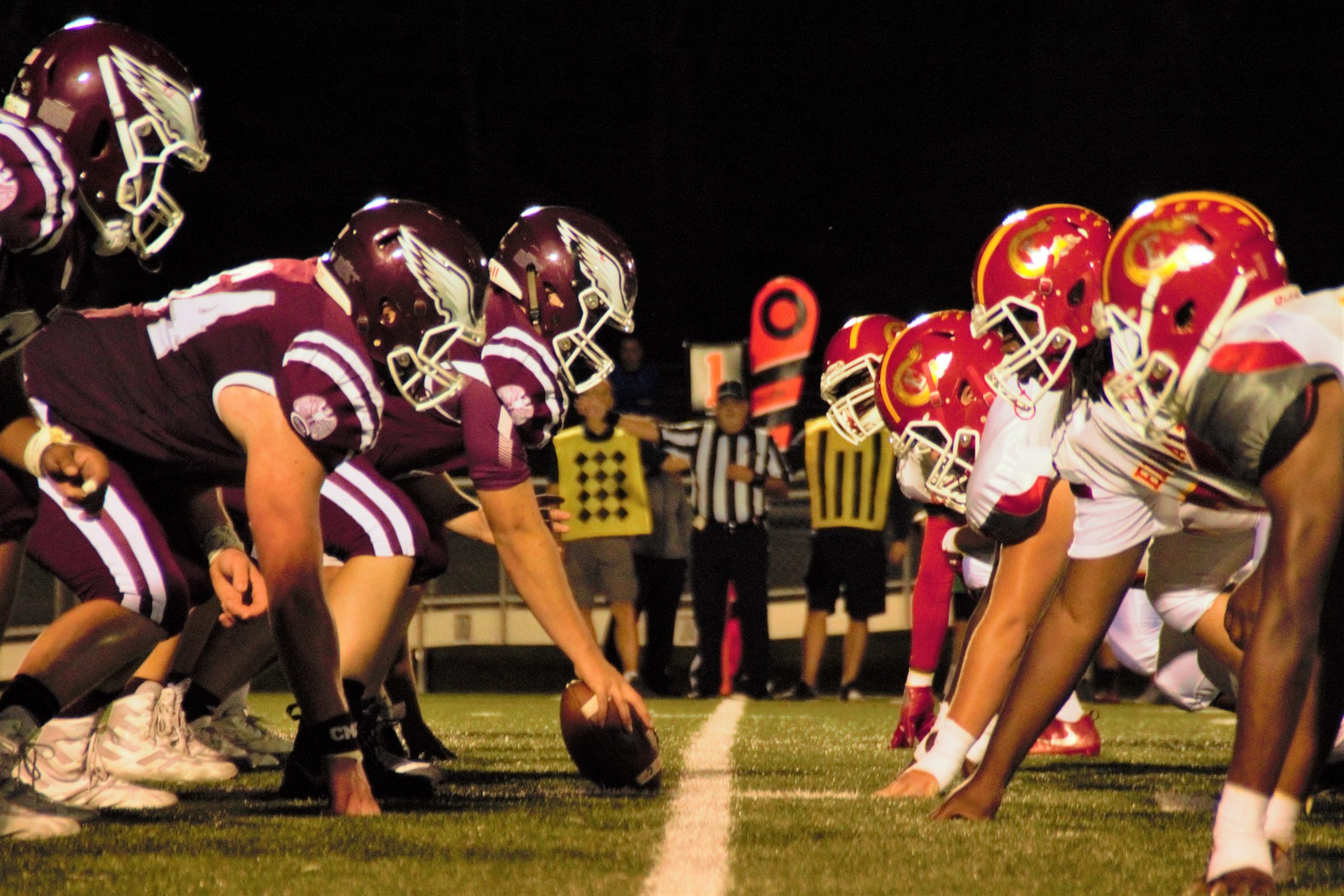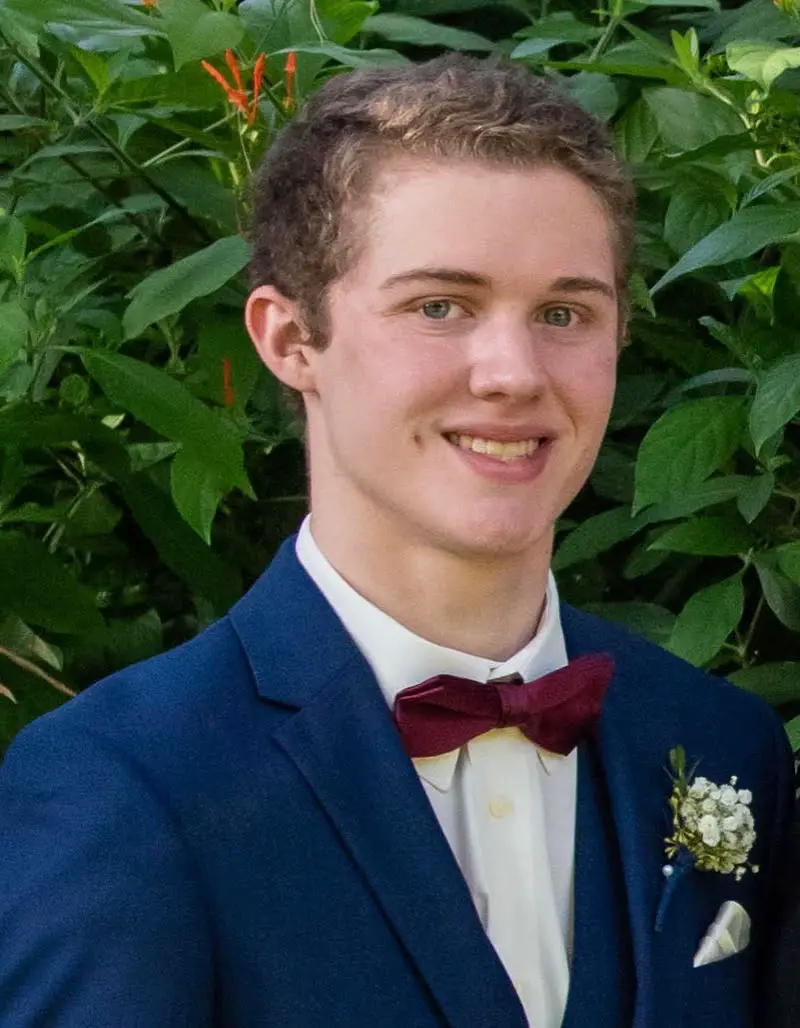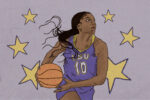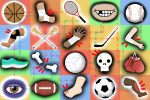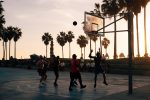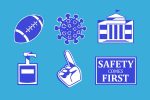On Sept. 30 of 2019, California Governor Gavin Newsom signed the landmark Fair Pay to Play Act into law. Student-athletes would finally be entitled to compensation for their respective name, image and likeness, or NIL, with the legal foundation to support them.
Though the state-restricted law won’t come into effect until 2023, it set a new precedent and timer for the National Collegiate Athletic Association to reform its relationship with the student-athletes it governs. This turning point was music to the ears of many such athletes, who had endured decades of harsh restrictions on potential earnings and substandard living conditions, but sounded more like a sharp whistle to the NCAA’s board of governors.
When the legislation was initially introduced, the NCAA referred to it as an “existential threat” to the landscape of college sports. A higher power had finally called foul on the sports powerhouse in the same year it boasted a total revenue of nearly $19 billion across all of its athletics departments. This supposed crisis was a mere narrative of desperation for the heads of Division 1 athletics, fearing that the legislation would redistribute millions of dollars worth of ownership from their hands to the players that viewers tuned in to see.
Attempts at damage control ensued, with the NCAA’s board of governors unanimously agreeing to loosen student-athletes’ rights to their name, image and likenesses a month after California’s decision. Halfway through the following year, on June 12 of 2020, Florida passed its own state law with an effective date of July 1, 2021. The timer to find an agreeable solution to the NIL contest was accelerated considerably, and the issue was raised to the federal level.
Yet with progress on any federal decision stalled following fairly inconclusive Senate hearings in June, temporary solutions have been implemented. The NCAA adopted an interim policy that allows for players to accept endorsements while maintaining “the collegiate model,” with the enforceable confines left to individual schools to determine. This system would, and will, remain in place until any federal verdict is reached, allowing players to earn while saving the NCAA from any further NIL-related protests before or during their forthcoming seasons.
Today, student-athletes can finally profit from their performance for the first time under NCAA rule, regardless of the considerable gray area both student-athletes, states and universities have to narrow down. So, while the offered timeline, even abridged, is complicated and indefinite, the development is cause for celebration. The NCAA and its student-athletes have been openly at war since the early ’80s over players’ right to pay.
Even the term “student-athlete” originated to prevent players from cashing in on their deserved cut of NCAA profits. According to Diverse: Issues in Higher Education, “The term was coined in the 1950s by the NCAA president at the time and the Association’s legal team to avoid paying worker’s compensation to the widow of a football athlete who died after a game injury, while also preventing future generations of college athletes from receiving worker’s compensation or pay-for-play.” The ambitions of such phrasing were to secure the NCAA’s economic interests rather than appease the players through any future compromise. This strategy paid dividends to the association for over half a century.
Still, it didn’t save the college-sports landscape from payment-related scandals in that timespan. Many of the NCAA’s most iconic student-athletes faced severe consequences, even erasure from the record books and history of college sports, for their roles in pay-to-play scandals. Whether through university boosters, illegal recruiting tactics, subliminal endorsement deals, paid appearances, autograph signings or other means, players from underprivileged communities have sought compensation for the attention they bring to their respective sports for decades. Reggie Bush, Cam Newton, Chris Webber, Maurice Clarett and DeAndre Ayton are only a few noteworthy names found to have accepted money for their involvement in college sports. These players were publicly shamed and hypocritically punished by the NCAA while their universities operated under similarly immoral practices.
Academic dishonesty, crime cover-ups and shady business dealings grew rampant among Division 1 powers along with the hike in television network and advertising deals. Today, it remains exceptionally difficult to find a major influence within the NCAA without a considerable scandal over the last 30 to 40 years. However, relative to the players found guilty of such violations, their punishments have proven marginal. For every player that accepted money, a vested interest was willing to pay them. Yet the NCAA remained content to cover for their contributors, as it quelled public outrage and protected the universities it ultimately serves.
Similarly, by punishing guilty players harshly, it embedded an expectation into the minds of players that pay-to-play was not a permissible option. However talented they were in their athletic fields, students were expected to survive solely off academic scholarships and dollar ramen. Some of the aforementioned players recounted their struggles to save up enough for gas and meals, despite their imminent professional careers and celebrity status nationwide.
They felt unappreciated and unprovided for, as well as unjustly punished when the truth of their actions came to light. Because the NCAA ultimately owned their NILs, the players’ agency was stripped from them without any discernible repercussions for the association.
Now, with the recent breakthrough to NIL ownership, many athletes have begun contesting their punishments on social platforms. Both Reggie Bush and Chris Webber, in particular, commented on the new rules when they were made official on July 1 in attempts to appeal their cases retroactively. Bush took to Twitter through an official statement, calling for his accolades to be reinstated, while Webber called for the return of his team banners to the rafters. Both former stars argue that because student-athlete pay is being permitted now, they were unrightfully vilified for their actions years ago.
Regardless of the NCAA’s feelings toward past cases, current players may reap the benefits of a long-fought case for ownership over player NILs. Companies who publicly disputed the previous restrictions on student-athlete pay-to-play immediately sprung at the idea of sponsoring players. Barstool Sports, for example, announced an expansive roster of newly coined Barstool athletes throughout the first week of newly implemented NIL rules.
Simultaneously, boosters for major programs have openly offered sponsorships to their favorite teams. One University of Miami booster offered each member of the university’s football team approximately $500 a month to promote his training facilities through various means. Once steeped in controversy and shady dealings, the act of sponsoring players has become a significant opportunity for businesses and student-athletes alike to thrive off the field.
How the new rules fluctuate following a federal decision is yet to be seen, as are concrete limitations on earnings. States, schools and the NCAA have a lot left to negotiate before abandoning the topic. However, the decision should prove to be a serious turning point in the history of college athletics. Profits and, more importantly, power have been placed back in the chalked and mitted hands of student-athletes. Conviction and protests over the years, as well as outspoken accounts of hardship and perseverance from former players, helped make the NIL breakthrough possible.
A new standard has officially been set for the governing bodies of college sports, allowing an unprecedented degree of parity at the negotiating table between student-athletes, universities and the NCAA. So, while a degree of uncertainty over the specifics remains, the modernized NIL regulations are a much-anticipated win on the scoreboard for all student-athletes.


